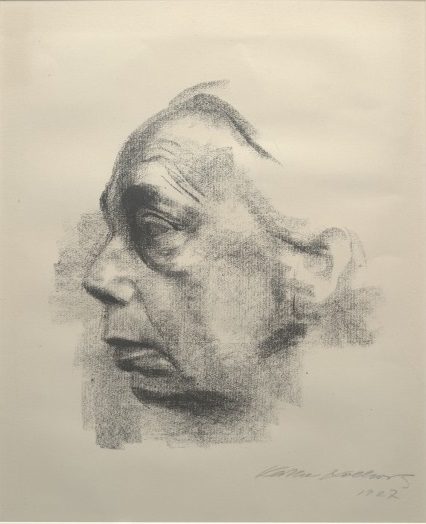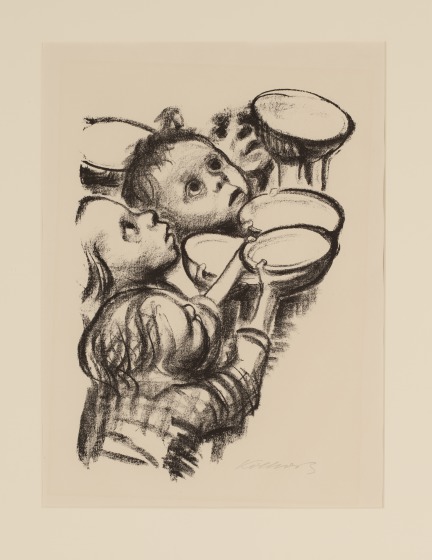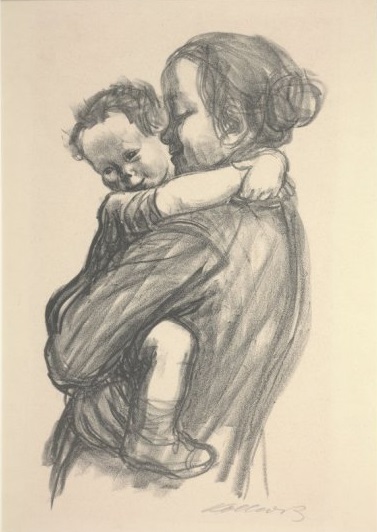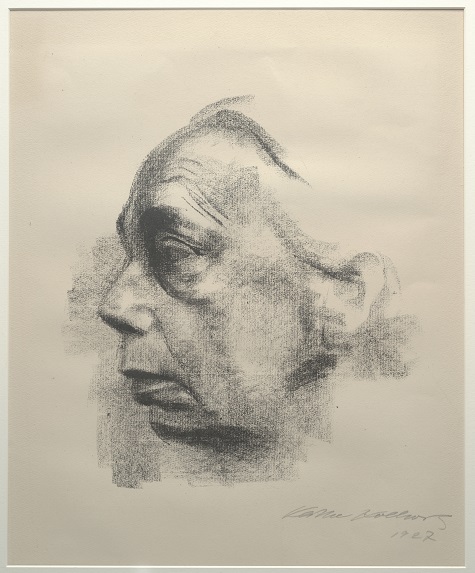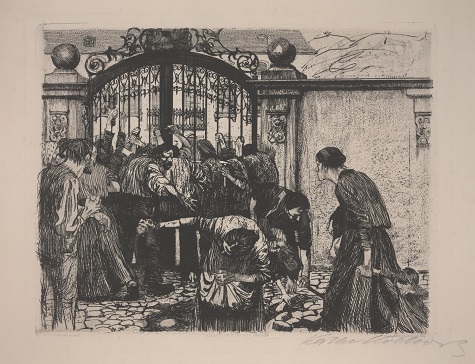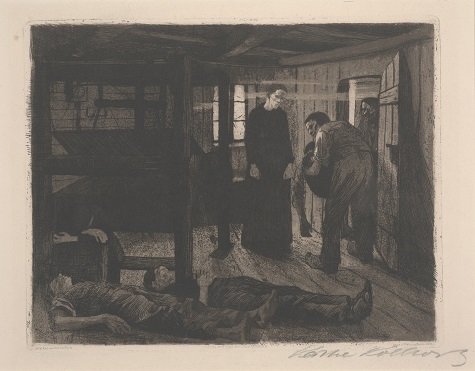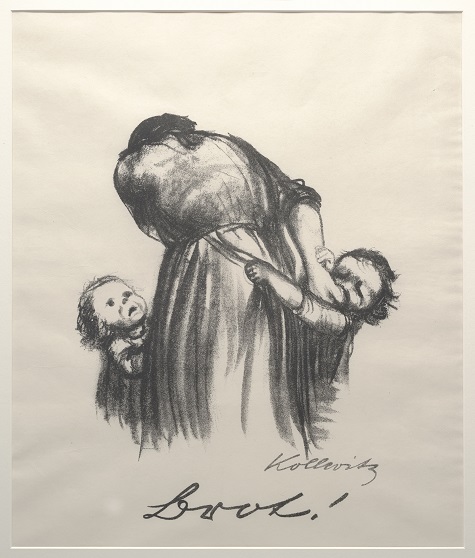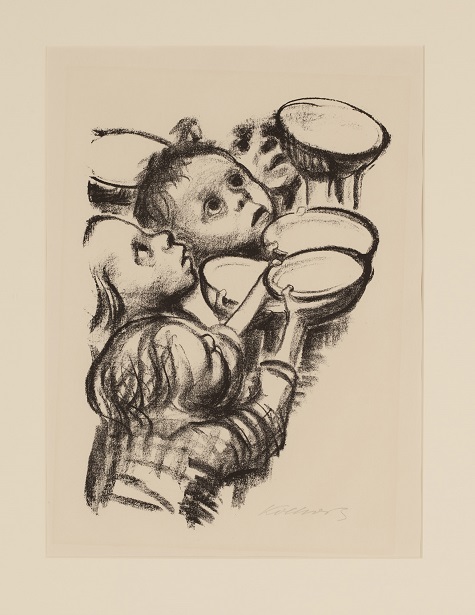Join us for Late Night this Friday when we will host artist Käthe Kollwitz of the feminist activist art collective the Guerrilla Girls as part of a celebration of women artists featured in Visions of America. For more than thirty years, women artists from across the country have donned gorilla masks and joined the ranks of the Guerrilla Girls to produce public art campaigns that raise awareness about gender and ethnic discrimination in the art world and beyond. Having decided early on that the members of the Guerrilla Girls would remain anonymous, they took this opportunity to shine some limelight on great women artists of the past by assuming the names of pioneers like Käthe Kollwitz, Frida Kahlo, and Zubeida Agha.
In an interview for the Smithsonian Institution’s Archives of American Art Oral History Program, Käthe explained the origin of their pseudonyms.
“Eventually we realized that we needed individual names within the Guerrilla Girls. When we went places in a group or in pairs, we needed to be individuals in some way. So this idea came up to have dead women artists as pseudonyms, and it was a useful idea because art historians were re-finding and representing the work of a lot of women artists from history. Most of the pseudonyms that people took were artists they’d never heard of before they started and only discovered when they read up on women artists, looking for a name.”
Käthe’s own namesake, Käthe Kollwitz (1867–1945), was a German printmaker and sculptor who also addressed social injustice in her work. She also happens to be well represented in the DMA’s collection
- Käthe Kollwitz, Self Portrait, 1927, lithograph, Dallas Museum of Art, gift of Mr. and Mrs. Alfred L. Bromberg, 1953.37
- Kathe Kollwitz, 1927, Anonymous Photographer, from Kathe Kollwitz Self-Portaits, 2007_w
Kollwitz’s work is at times touching and heart-wrenching with intimate portraits of mothers with their children as well as genre scenes depicting the plight of the urban poor. Her subjects are often gaunt figures whose shadowy eyes and pained poses speak volumes about the dire circumstances under which they lived. Having endured multiple personal tragedies and both world wars, she was an artist who did not shy away from showing the realities of war, poverty, and loss.
- Käthe Kollwitz, Hungry children (Deutschlands Kinder Hungern!), 1924, Lithograph, Dallas Museum of Art, Foundation for the Arts, The Alfred and Juanita Bromberg Collection, bequest of Juanita K. Bromberg, 2000.246.FA
- Käthe Kollwitz, Boy with Arms Around Mother’s Neck, 1931, Lithograph, Dallas Museum of Art, gift of Mrs. Leon A. Harris, Sr., 1940.59
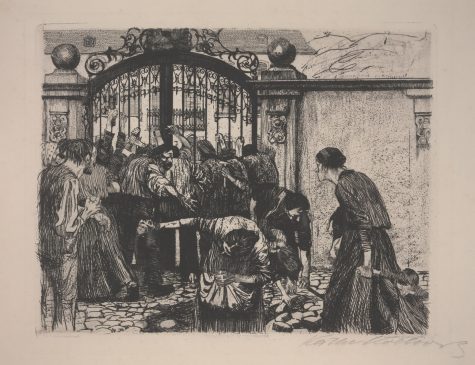
Käthe Kollwitz, Revolt (Sturm), 1897, Etching, Dallas Museum of Art, Foundation for the Arts, The Alfred and Juanita Bromberg Collection, bequest of Juanita K. Bromberg, 2000.192.FA
Remarking on how she arrived at the pseudonym Käthe Kollwitz, the artist said, “It’s very personal for everybody. Käthe Kollwitz is not my all-time favorite artist, but she’s a great role model. She was an activist as well as an artist. She didn’t believe in the expensive, fancy art system. She did a lot of cheap prints that she gave and sold very cheaply. She did a lot of work about working people, about women and children, even work about sex. She was a fierce woman artist.”
Over 70 years after Kollwitz’s death the Guerrilla Girls are continuing the practice of using art to raise awareness. Reflecting on their own 30 year legacy, Käthe will speak about favorite projects and how the group has approached activism in their work. For more information about this and other Late Night programs, visit DMA.org.
Jessie Frazier is Manager of Adult Programming at the DMA

